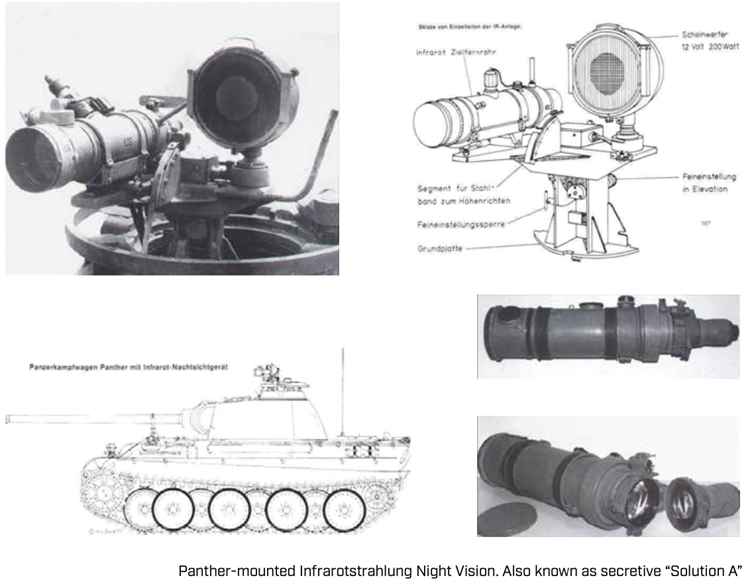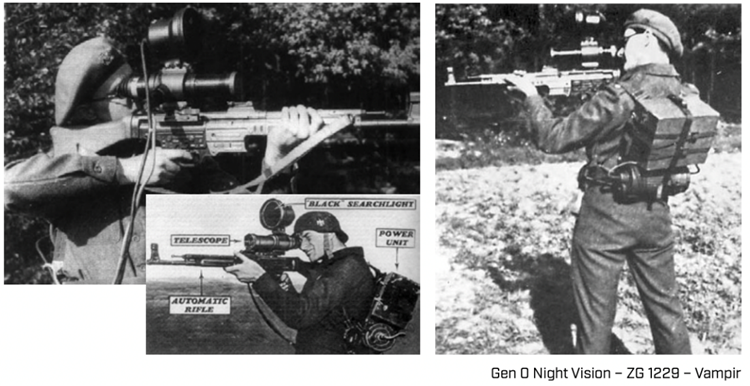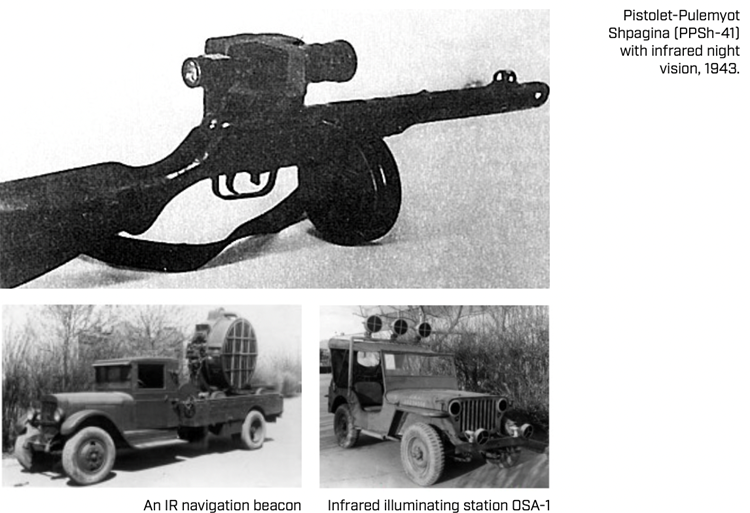Lesson 5 - Unveiling the Hidden Heroes of World War II: Night Vision Emerges
Sep 19th 2023
When we think about World War II, we often envision battlefields bathed in the harsh glare of daylight, soldiers courageously charging forward. But behind the scenes, a quiet revolution in technology was taking place - one that would change the way warfare was waged forever. Enter the world of night vision, a technology born out of scientific innovation and strategic necessity.
In the 1930s, as the storm clouds of war gathered, advancements in science and technology were being made in unexpected places, including Germany. Two companies, AEG (Allgemeine Elektricitäts-Gesellschaft) and Zeiss (or Leitz), emerged as pioneers in a field that would later become crucial for nocturnal combat: night vision. But this wasn't the night vision we know today; it was in its infancy, a mere hint of the powerful tool it would become.
The journey began with the development of Infrarotstrahlung (IR) and Ultrarotstrahlung (UR) technologies, essentially harnessing infrared and ultraviolet radiation. In 1936, AEG received orders to dive into the world of infrared night-vision devices. By 1939, they had crafted the first successful prototype, a unit meant to be used with the fearsome 37mm Pak 35/36 L/45 anti-tank gun. This was a game-changer - the ability to see in the dark was now a tangible reality.


The momentum continued, and by the autumn of 1942, a unit combining an infrared headlamp with a viewer, known as ZG 1221, was developed for use with the 75mm PaK 40 L/46 anti-tank gun. As World War II raged on, the German armed forces, or Wehrmacht, equipped more than three hundred night-fighting Panthers with 200-mm infrared searchlights FG 1250 and an image converter called BIWA (Bildwandler). These innovations granted them the ability to see up to 600 meters in the dead of night, a significant advantage on the battlefield.
Interestingly, these tools weren't only for tanks and artillery. Elite soldiers, dubbed Nachtjäger or night-hunters, were armed with StG 44 (Sturmgewehr 44) storm rifles equipped with ground night vision weapon sights and 200mm IR searchlights. Snipers wielded peculiar devices - the Ziel-gerät 1229 (ZG 1229), affectionately known as "Vampir," allowing them to take shots at night using specialized optical sights coupled with non-shining torches.

Meanwhile, on the other side of the conflict, the Soviet Union wasn't far behind. In 1943, they embarked on their own journey to adapt the iconic PPSh-41 with night vision capabilities. By 1944, they had developed the first Russian IR sight, aptly named "Iskra" (meaning "spark"). This sight required a two-person operation: one operator used IR binoculars to locate the target, while the other operated the sight and took the shot, aided by a 30-W IR illuminator. While the technology showed promise, it didn't see much action in battle conditions.


It's fascinating to think about these unsung heroes of the World War II era - the scientists, engineers, and soldiers who worked tirelessly to bring the power of sight to the darkest hours of conflict. Their innovations, while humble by today's standards, laid the foundation for the sophisticated night vision technology we rely on today. So, the next time you picture a World War II battlefield, remember that the darkness held its own secrets, illuminated by the ingenuity of those who dared to see beyond the night.
